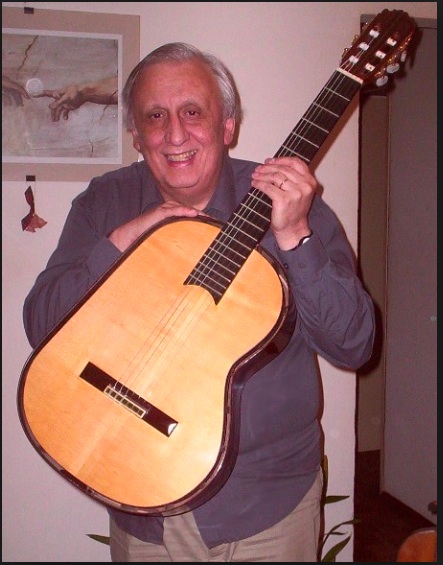|
C. Vega -> RE: Latin American traditional music (Jan. 3 2014 19:14:11)
|
Contreras made several (I have no idea how many) Carlevaro models with nicely executed but rather simple lute-style roses carved into the tops. I've seen them, at least in pictures, with both spruce and cedar tops. However, the roses are not open to the interior of the instrument. They have a solid backing behind them and the guitar still depends on the slot around the edge for air movement. The roses are purely decorative.
There used to be a couple of videos floating around of the Paraguay-based guitar hustler/shyster/teacher Renato Bellucci playing one with a cedar top and a rose. If anyone's interested in seeing them they can do a search for them.
Out of respect for his father, the late Pablo Contreras kept one on display in the shop (no rose, just a couple of simple rings of purfling and a small center inlay where the soundhole would normally be) along with a few other guitars made by Don Manuel but he told me that he personally never liked the sound of the Carlevaro model.
|
|
|
|

